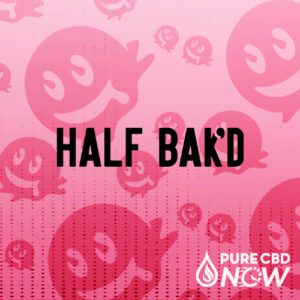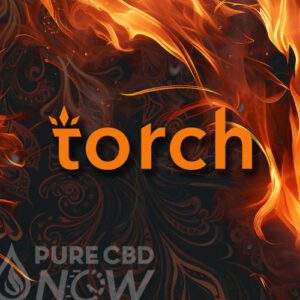Kratom For Opioid Withdrawal
Discover amazing products designed just for you.
Featured Products
No products found for the provided IDs.
Key Takeaways:
- Kratom For Opioid Withdrawal may offer relief from cravings, anxiety, and physical discomfort, but it should be used cautiously due to the potential for dependence.
- Kratom Strains such as Red, Green, and White Vein have different effects, so choosing the right strain based on your withdrawal symptoms can help maximize benefits.
- Safe Kratom Use involves starting with a low dose, monitoring symptoms, and avoiding prolonged daily use to prevent tolerance and dependency issues.
Ease the exit.
Opioid withdrawal can be an incredibly difficult and isolating experience. If you’re reading this, you may be looking for a way to manage the discomfort and regain control of your life. The process of recovery is filled with uncertainties, but the hope of finding effective, natural alternatives to ease symptoms is something many are searching for.
In this article, we’ll examine Kratom as a potential solution to help ease the challenges of opioid withdrawal.
Understanding Opioid Withdrawal: Symptoms And Severity
Opioid withdrawal is a challenging and often painful process that affects individuals who stop using opioids after prolonged use. Understanding the symptoms and severity of opioid withdrawal is crucial for those seeking alternative and holistic healing methods, such as kratom, for managing these symptoms.
Symptoms Of Opioid Withdrawal
The symptoms of opioid withdrawal can vary in intensity and duration based on several factors, including the type of opioid used, the duration of use, and the individual’s physical health. Common symptoms include:1
- Anxiety And Agitation: Feelings of unease and restlessness are common in the early stages of withdrawal.
- Muscle Aches And Pains: Many individuals report experiencing deep muscle aches, making it difficult to find comfort.
- Sleep Disturbances: Insomnia or disrupted sleep patterns are frequent, compounding the individual’s distress.
- Gastrointestinal Discomfort: Symptoms such as nausea, vomiting, diarrhea, and abdominal cramping can be particularly debilitating.
- Sweating And Fever: These flu-like symptoms are the body’s response to detoxification.
- Cravings: A strong desire to use opioids again to relieve withdrawal symptoms can be one of the hardest challenges to overcome.
Severity Of Opioid Withdrawal
The severity of withdrawal symptoms can vary widely. For some, withdrawal is a deeply uncomfortable but manageable experience. For others, particularly those with a long history of heavy opioid use, withdrawal can feel unbearable, leading to significant physical and psychological distress. The severity often peaks within the first week after cessation, gradually subsiding. However, some symptoms, particularly cravings and mood swings, can persist for weeks or even months.
How Kratom May Help Opioid Withdrawal Symptoms
Kratom is derived from the leaves of the Mitragyna speciosa tree, native to Southeast Asia. It contains active compounds known as alkaloids—primarily mitragynine and 7-hydroxymitragynine — which interact with opioid receptors in the brain.2 While Kratom is not an opioid itself, its ability to bind to these receptors has led some to consider it as a potential aid for those suffering from opioid withdrawal. Here’s a breakdown of how Kratom may help manage opioid withdrawal symptoms:
Reducing Cravings And Anxiety
Intense cravings are one of the most challenging aspects of opioid withdrawal. Kratom’s interaction with opioid receptors can help reduce these cravings by mimicking the effects of opioids without causing a high. For many, this means that Kratom may help curb the psychological need to continue using opioids.
Additionally, opioid withdrawal is often accompanied by anxiety and agitation. Kratom’s calming effects, especially at higher doses, may help alleviate feelings of restlessness and anxiety, making the withdrawal process more manageable.
Easing Physical Pain And Discomfort
Opioid withdrawal is notorious for its physical symptoms, which can include muscle aches, joint pain, and overall body discomfort. Kratom’s analgesic properties, which are attributed to its ability to bind to opioid receptors, may help reduce pain and discomfort during the detoxification process. Many individuals report that Kratom’s pain-relieving effects are similar to those of prescription opioids but without the addictive risks.3
At higher doses, Kratom has sedative effects that can provide relief from pain, making it potentially useful in managing the physical symptoms that accompany opioid withdrawal.
Promoting Better Sleep
Sleep disturbances are a common withdrawal symptom, with many individuals experiencing insomnia or disrupted sleep patterns. Kratom may help promote better sleep due to its sedative effects at higher doses. Reducing anxiety and relieving physical discomfort, Kratom can create a more conducive environment for rest and recovery.
However, it’s important to note that while Kratom may help with sleep in the short term, prolonged use can disrupt sleep patterns, so it should be used cautiously in managing this symptom.
Choosing The Right Kratom Strain For Withdrawal
Here’s a breakdown of the most common Kratom strains and how they may help with opioid withdrawal symptoms:
Understanding Kratom Strains
Kratom comes in several strains, each with unique properties and effects. These strains are generally categorized by the color of the vein in the leaf, which are Red, Green, and White. The choice depends mainly on the symptoms you wish to address and the desired outcome:
- Red Vein Kratom: Known for its potent sedative properties, Red Vein Kratom is preferred by individuals seeking relief from pain, insomnia, and anxiety. It’s often recommended for those in the later stages of opioid withdrawal, where calming effects are much needed.
- Green Vein Kratom: This strain strikes a balance between the sedative effects of the Red Vein and the stimulant effects of the White Vein. Ideal for those looking for pain relief without heavy sedation, Green Vein Kratom may also help alleviate mild discomfort and mood swings associated with opioid withdrawal.
- White Vein Kratom: White Vein strains are recognized for their energizing effects. For individuals struggling with fatigue and depression during the early stages of withdrawal, a White Vein strain could provide a much-needed energy boost and improve focus.
Personalizing Your Choice
The journey through opioid withdrawal is deeply personal, and what works for one individual may not work for another. Here are a few considerations to help you choose the right Kratom strain for withdrawal:
- Assess Your Symptoms: Are you primarily dealing with physical pain, or are mood and energy levels your main concern? Identifying your most pressing symptoms can guide you toward the most suitable strain.
- Start Low And Go Slow: Especially if you are new to Kratom, begin with a lower dose to see how your body responds. You can gradually adjust the dose based on your symptoms and tolerance.
- Consult With Experts: Before starting any new supplement, especially for something as critical as opioid withdrawal, seek advice from healthcare professionals or seasoned Kratom users. Their insights can be immensely valuable in making an informed decision.
- Quality Matters: Source your Kratom from reputable sellers to ensure purity and safety. Pure CBD Now, known for its commitment to high-quality, lab-tested kratom products, emphasizes the importance of transparency and reliability in all health and wellness products.
How To Use Kratom Safely For Opioid Withdrawal: Dosage And Timing
Using Kratom safely for opioid withdrawal involves careful consideration of dosage, timing, and personal health factors. While Kratom may offer relief from withdrawal symptoms, it’s crucial to approach it responsibly to avoid potential risks or side effects. Below, we will explore safe usage guidelines for Kratom in the context of opioid withdrawal.
Dosage: Starting Low and Going Slow
The key to using kratom effectively is to start with a low dose and gradually increase it as needed. For those new to kratom, beginning with a dose as low as 1 to 2 grams can provide insight into how your body responds. You may consider a small additional dose if the desired effects are not achieved within about 20 minutes to an hour. For managing opioid withdrawal symptoms, a moderate dose typically ranges from 3 to 5 grams, but individual responses can vary dramatically.
It’s crucial to listen to your body and adjust accordingly, but never exceed the recommended maximum dose of 8 grams, as this can lead to adverse effects and diminish the plant’s therapeutic benefits.
Timing: Understanding The Best Times For Intake
Integrating kratom into your routine for opioid withdrawal relief involves paying attention not just to how much you take but when you take it. Using kratom in the morning may help alleviate withdrawal symptoms that might have built up overnight, giving you a smoother start to your day. An afternoon dose can help sustain the relief throughout the day and address discomfort or cravings as the effects wear off.
For those with severe symptoms, including intense cravings or physical discomfort, dividing the daily dosage into two or three smaller doses taken throughout the day can provide more consistent relief. However, it is best to avoid late evening intake, as kratom can interfere with sleep patterns for some individuals.
Individual Factors To Consider
When determining the optimal dosage and timing for kratom use in opioid withdrawal, individual factors play a significant role. These include the severity of the withdrawal symptoms, body weight, general tolerance to opioids, and personal metabolism. Thus, personal experimentation and adjustment are often necessary to find what works best for you.
Prioritizing Safety And Responsibility
Remember, while kratom can offer relief for some individuals undergoing opioid withdrawal, it’s essential to approach its use with caution and responsibility. Always ensure that the kratom you source is of high quality and from a reputable provider, like Pure CBD Now, which emphasizes lab-tested products and transparency.
Potential Risks Of Using Kratom For Opioid Withdrawal: What You Need To Know
While Kratom has been touted as a potential remedy for opioid withdrawal by many, it is crucial to approach this option with caution and be informed of its potential risks. As advocates for informed choices in the journey toward wellness, here’s what you need to know about the risks associated with using Kratom for opioid withdrawal.
- Dependence And Addiction Potential: Similar to opioids, Kratom targets the same brain receptors, which can lead to dependence and, in some cases, addiction. Individuals seeking relief from opioid addiction might find themselves trading one dependency for another.
- Regulatory Uncertainty: Kratom’s legal status is murky in various parts of the world, including the United States, where it is not regulated by the Food and Drug Administration (FDA). This lack of regulation can lead to products of inconsistent quality and purity, raising concerns about safety and efficacy.
- Side Effects: Kratom use is not without its side effects. Users have reported experiencing symptoms ranging from nausea, itching, sweating, dry mouth, constipation, increased urination, and loss of appetite to more severe effects such as liver damage, changes in mood, and psychosis in rare instances.
- Limited Research: There is a significant gap in comprehensive research on Kratom’s efficacy, safety, and long-term effects. Without robust clinical trials, the full spectrum of risks and potential benefits associated with Kratom use for opioid withdrawal remains unclear.
- Interactions With Other Drugs: Kratom may interact negatively with other substances, including prescribed medications, over-the-counter drugs, and alcohol. These interactions can intensify side effects or lead to unforeseen complications.
- Withdrawal Symptoms: Just like opioids, discontinuing Kratom after long-term use can lead to withdrawal symptoms. These symptoms can include muscle aches, irritability, emotional changes, aggression, runny nose, and insomnia, further complicating the recovery process from opioid dependence.
Avoiding Dependency: Tips For Responsible Kratom Use
Here are some key tips for responsible kratom use:
Start Small
Begin with the lowest possible dose that produces the desired effects. Kratom’s efficacy varies greatly depending on the strain and the individual’s body chemistry, so it’s important to find the minimum effective dose. This approach minimizes the risk of developing tolerance and dependency.
Educate Yourself On Strains
Kratom comes in various strains, each with different effects. Some strains are more energizing, while others are sedating. Knowing which strain to use for your needs can enhance the benefits while minimizing the risks. Take the time to research and perhaps consult with more experienced users or healthcare professionals knowledgeable about herbal supplements.
Keep Usage Infrequent
To avoid building tolerance, it’s crucial to limit kratom use. Try to reserve kratom for moments when withdrawal symptoms are particularly unbearable or when you need extra support. Persistent daily use can lead to dependence, so it’s advisable to have days off in between usage.
Monitor Your Response And Symptoms
Listen to your body and recognize signs of tolerance or dependency. These can include feeling the need to increase your dose to achieve the same effects, experiencing withdrawal symptoms when not using kratom, or using kratom as a sole coping mechanism for stress or pain. Consider taking a break or seeking professional advice if you notice these signs.
Consider Professional Support
While kratom can offer temporary relief from opioid withdrawal symptoms, it’s not a substitute for comprehensive treatment. Consider integrating kratom use with professional support, such as counseling or a formal opioid withdrawal program. This holistic approach can help address the underlying causes of opioid dependency.
Read Also:
- Kratom Side Effects: Risks And What To Expect
- Best Kratom Strains: Top Varieties For Every Need
- Kratom Types And Strains: Comprehensive Guide For Beginners
Sources:
- Table – PMC. (2019). Nih.gov. https://pmc.ncbi.nlm.nih.gov/articles/PMC6590307/table/ajad12862-tbl-0002/
- Nur, Ummi Kalthum Azlan, Mediani, A., Tong, X., Han, R., Ebtesam Al-Olayan, Syarul Nataqain Baharum, Hamidun Bunawan, Murni Nazira Sarian, Hamizah Shahirah Hamezah, & Ibrahim Jantan. (2024). An insight review on the neuropharmacological effects, mechanisms of action, pharmacokinetics and toxicity of mitragynine. Biomedicine & Pharmacotherapy, 171, 116134–116134. https://doi.org/10.1016/j.biopha.2024.116134
- Phipps, S. M., & Grundmann, O. (2017). Pharmacology and Structure-Activity Relationship of Natural Products With Psychoactive Effects From Salvia divinorum , Mitragyna speciosa , and Ayahuasca. Studies in Natural Products Chemistry, 1–44. https://doi.org/10.1016/b978-0-444-63930-1.00001-6
Frequently Asked Questions About Kratom For Opioid Withdrawal
Can kratom completely alleviate opioid withdrawal symptoms?
Kratom, a natural supplement derived from the leaves of the Mitragyna speciosa tree native to Southeast Asia, has gained attention for its potential to ease opioid withdrawal symptoms. However, it’s important to note that while kratom may help manage symptoms, it may not eliminate them. The effectiveness of kratom can vary widely among individuals, depending on the severity of addiction, dosage, and personal biology.
What forms of kratom can be used for opioid withdrawal?
Kratom is available in various forms to suit different preferences and needs. The most common forms include:
- Extracts: Kratom extracts are more potent forms of kratom available in liquid or powder form.
- Powder: Kratom leaves are dried and crushed into a fine powder, which can be mixed with water or juice.
- Capsules: Kratom powder is encapsulated, offering a convenient and taste-free option.
- Tea: Dried kratom leaves or powder can be used to brew tea.
How long should kratom be used during opioid withdrawal?
The duration of kratom use for opioid withdrawal should be individualized. Generally, it’s advised to use kratom for the shortest duration necessary to manage withdrawal symptoms, as prolonged use can lead to tolerance and potential dependence on kratom itself. A healthcare provider experienced with kratom or addiction treatment can offer guidance tailored to your specific situation.
Is kratom legal?
Kratom’s legality varies by country and, within the United States, by state. As of now, kratom is legal in most states in the U.S. but is banned or regulated in others. It’s crucial to check the current legal status of kratom in your location before purchasing or using it.
Where can I buy kratom?
Kratom can be purchased from reputable online retailers, specialty health stores, or smoke shops. When buying kratom, it’s important to choose suppliers that provide lab-tested products to ensure quality and safety. Websites like Pure CBD Now, known for high-quality, lab-tested kratom products, also offer guidance on selecting quality kratom products.
Can kratom interact with other medications I’m taking?
Kratom can interact with other medications, potentially altering their effects. This includes medicines for pain, anxiety, depression, and other conditions. Before using kratom, especially for opioid withdrawal, consult with a healthcare professional to discuss potential interactions and ensure safe use.




































